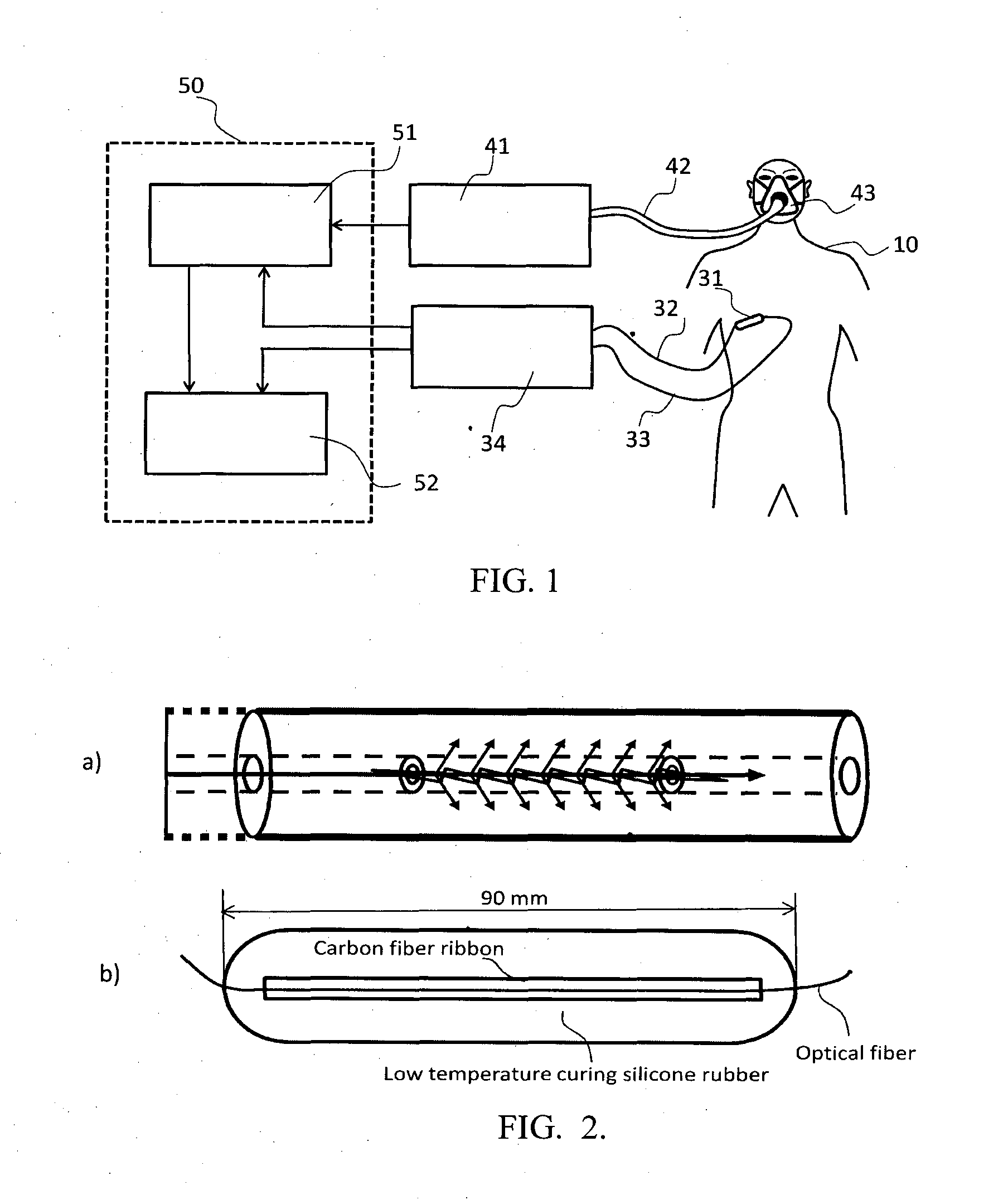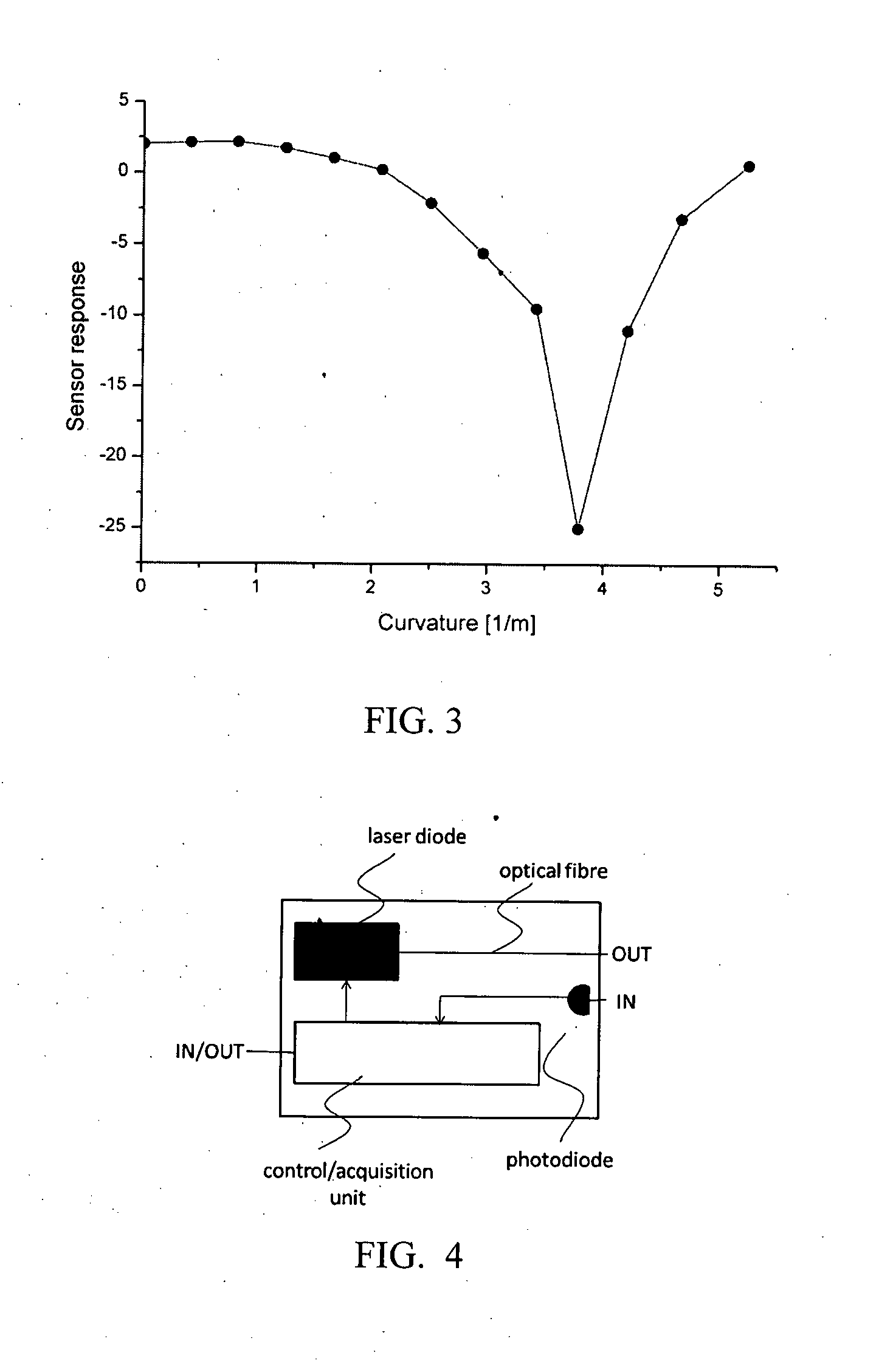Apparatus and Method for Monitoring Respiration Volumes and Synchronization of Triggering in Mechanical Ventilation by Measuring the Local Curvature of the Torso Surface
a technology of torso surface and torso sensor, which is applied in the direction of sensors, medical devices, diagnostics, etc., can solve the problems of increasing the morbidity of critically ill patients, affecting the measurement, and adding to the burden on the respiratory system, so as to eliminate sharp bending and poor measurement results
- Summary
- Abstract
- Description
- Claims
- Application Information
AI Technical Summary
Benefits of technology
Problems solved by technology
Method used
Image
Examples
Embodiment Construction
[0048]FIG. 1. shows a block diagram of an embodiment of a system for measuring respiratory volumes in accordance with the presented invention. Referring to FIG. 1, as an example of the sensor working principle, an LPG curvature sensor 31 is attached the patient's 10 lower ribs area, preferably between the ribs 6 and 8, between the lines parallel with the sternum, at about 10 cm left and right from the sternum. The sensor may be self-adhesive, placed on an adhesive tape, or attached otherwise. Two optical fibers 32 and 33 are connecting the LPG sensor to an interrogation module 34, which converts the optical signal from the LPG sensor 31 to a digital signal proportional to the sensor curvature. Since the measurements using LPG sensors are based on the transmitted signal detection, the direction of the optical signal propagation in the first optical fiber 32 is from the interrogation module 34 to the LPG curvature sensor 31, while in the other optical fiber 33 the transmitted optical ...
PUM
 Login to view more
Login to view more Abstract
Description
Claims
Application Information
 Login to view more
Login to view more - R&D Engineer
- R&D Manager
- IP Professional
- Industry Leading Data Capabilities
- Powerful AI technology
- Patent DNA Extraction
Browse by: Latest US Patents, China's latest patents, Technical Efficacy Thesaurus, Application Domain, Technology Topic.
© 2024 PatSnap. All rights reserved.Legal|Privacy policy|Modern Slavery Act Transparency Statement|Sitemap



